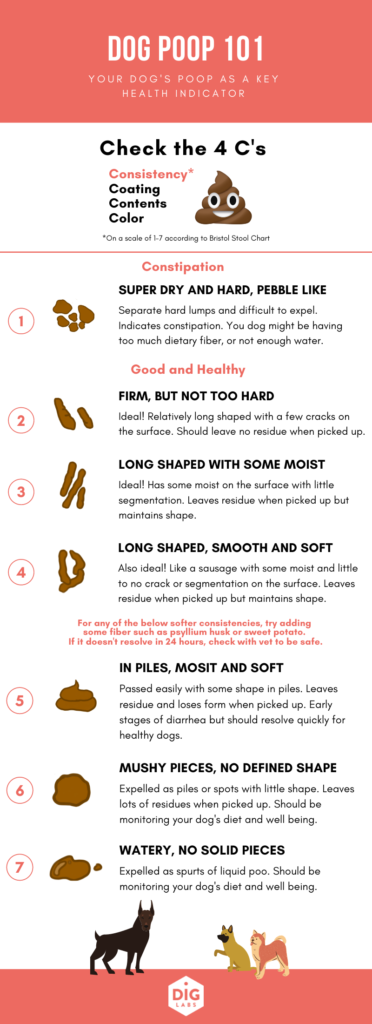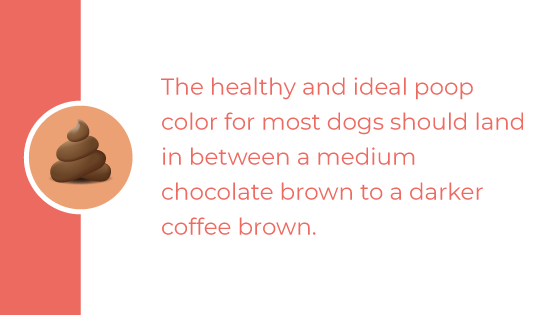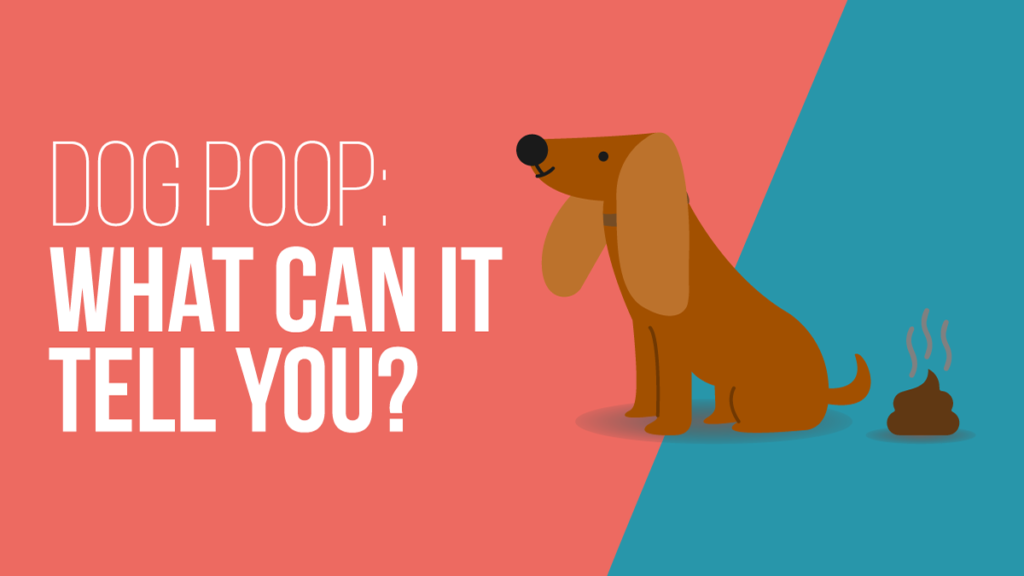If you’ve ever wished your dog could talk to you, look no further than their stool. Dog poop is an important indicator of your dog’s general health. This is especially true since dogs can’t tell us what’s happening in their bodies! We’ve provided a dog poop color chart to help determine your dog’s health.
Josh Richman and Anish Sheth write, “Not unlike a snowflake, each bowel movement has a uniqueness that should be regarded with wondrous appreciation.” Like humans, dogs’ digestive tracts play a leading role in their health. While we often focus on what goes in, what comes out is important too.
Next time your dog goes to the bathroom, take note of the four C’s: Consistency, Coating, Contents, and Color.
Dog Poop Consistency
Many veterinarians use the Bristol Stool Score dog poop chart of 1-7 to rank the consistency of stool. The scale ranges from a 1 or 2 (constipation) to 7 (watery diarrhea). The ideal stool is easy to pick up and doesn’t leave any markings or residue on the ground.

Dog Poop Coating
Normal and healthy dog stool should be free of any coating. If a coating is present, such as mucus or blood, this can be a sign of intestinal distress or GI inflammation. Mucus is a sign of a functioning dog digestive and immune system. It can look like:
- A shiny, thin coating over the stool
- Slimy, goopy, or jelly like discharge
- Milk colored, opaque section of stool
Dog poop white mucus usually comes from your dog’s large intestine, and is often observed when bathroom breaks are more frequent or urgent. If the quantity is high or this is an ongoing issue, please check in with your veterinarian.
If you notice blood in your dog’s stool, don’t panic. First, note if the color of blood is bright red or dark, almost black red. Bright red blood generally comes from the large intestine (where stool forms) and can result from something as simple as stress. Dark red blood originates in the small intestine (your dog’s major digestive organ) and usually has more serious causes.
Dog Poop Color
Normal dog poop color varies from dog to dog. Normal can even change from time to time, depending on key inputs like your dog’s diet. For most dogs, the healthy and ideal poop color is a medium chocolate brown to a darker coffee brown. Protein type can also impact color. High poultry diets are often more yellow or have a bi-color coating. Raw fed dogs can even have white colored stool, which is totally normal.

Light grey or ash dog poop color indicates too much calcium. Very dark or black color may be from eating too much organ meat (like kidney, liver, and heart). Green dog poop can be from large amounts of grass or greens in your dog’s diet, but it can also signal a parasite. See your vet if the changes persist for 1-2 days to be safe.
Dog Poop Content
Dogs have the shortest digestive tract of most mammals, averaging 6-8 hours. If your dog eats fresh food, like carrots, greens or peas, these harder to digest foods may come out in your dog’s poop if they’re not digested in time. Puree vegetables or legumes before feeding to help your dog’s digestive system.
Another dog poop content that we see, especially in puppies or shelter dogs, are worms. While large, adult worms in dog poop are hard to miss, worms can also look like small pieces of rice. These white specks in dog poop tend to be tapeworm segments. Don’t worry if your dog has worms! Treatment is simple with dewormer from your veterinarian or online.
Dog Poop Smell
Lastly, we’d be remiss to not comment on the smell. The less smelly your dog’s poo is, the healthier! Stinky bowel movements are a sign of poor digestion or absorption of key nutrients. Additionally, foul smelling farts can be a signal of excess carbohydrates in your dog’s diet.
As you can tell, there is a lot to learn from dog poo! Tracking your dog’s poop on a regular basis can help to prevent major health issues. Plus, knowing the basics of the dog poop chart 4 C’s is important when there is an issue.Want to improve your dog’s poop? We recommend probiotics, especially for dogs who eat dry food, by feeding goats milk kefir or powder probiotics. (Note: Studies and tests show that dog kibble claiming to contain probiotics almost never do.)
Get the DIG Labs App
Download the free DIG Labs Digestive Health Tracker to get personalized insights and recommendations for your dog based on their stool.

